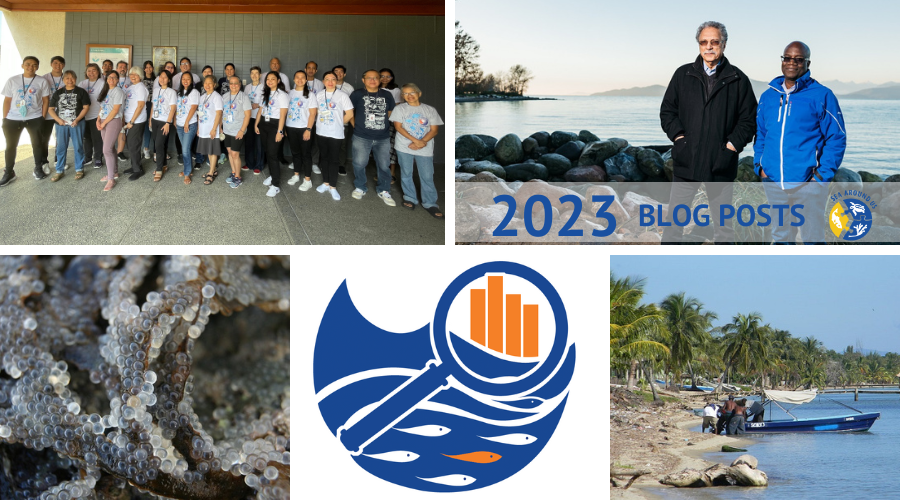
The Sea Around Us project manager, Dr. Maria ‘Deng’ Palomares, with Belizean fishers. Photo by the Belize Fisheries Project.
Belizean fishers’ experience in the water confirms the declining trends in fishery catches – and, therefore, in fish populations – uncovered by the Belize Fisheries Project (BFP), of which the Sea Around Us is a member together with Comunidad y Biodiversidad (COBI), the Environmental Law Institute (ELI), Healthy Reefs for Healthy People Initiative (HRI) and MRAG Americas.





